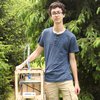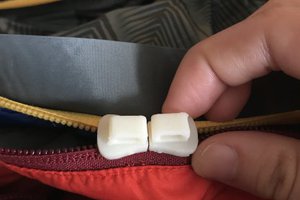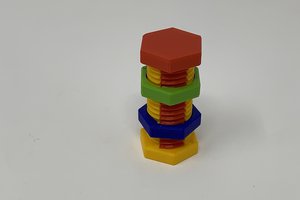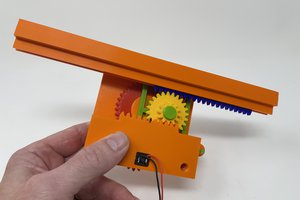I made a YouTube video about this entire project:
I had seen this video from Maker's Muse: which gave me the inspiration for the solution to my problem. By utilizing the cubic lattice structure that can be modeled in Meshmixer, I have been able to make 3D printed bouncy balls that bounce better than the original (plain and spherical).
Here are my results:
Version 1: This was the first attempt at using a 3D cubic lattice to improve bounciness. It was very dense and too hard. It had a wall thickness of 2mm, a tube thickness of 3mm, and a density of 7.5mm.
Version 2: This was the second try using the cubic lattice. It produced great results. It was not too dense, bounced very well, and bounced consistently. It had 4mm wall thickness, 4mm tube thickness, and 10mm density. On average, it bounces 3' 9".
Version 3: The third attempt yielded worse results than the previous one. It bounced less, (averaging 3' 4") and less consistently. It had a 3mm wall thickness, a 3mm tube thickness, and a 18mm density.
Expansion and further information:
Upon further investigation, I found that there is a fundamental limit to how "consistently bouncy" a 3D printed structure can be. This is a result of 3D printed flexible materials being more elastic in parallel with the layer lines. This results in the ball bouncing best when it's layers are parallel with the surface it is bouncing off of. Paradoxically, 3D printing is the only manufacturing technology that can make this geometry, making this limit unavoidable.
This knowledge, along with the designs and information of the project itself could have many applications in controlled compliancy and metamaterials. If the density of the lattice were to be different throughout a 3D object, the finished print would have varying compliancy, i.e., different levels of softness. This is a vital function to mechanical metamaterials. Most compliant metamaterials are based on 2-dimensional structures. This is great for mimicking simple and linear mechanisms, but is not as suitable for more complex systems. A 3D metamaterial structure could potentially solve this bottleneck. Although this is mostly hypothetical right now, I am researching the concept.
Links:
Thingiverse: http://www.thingiverse.com/thing:1778238
 Aidan Leitch
Aidan Leitch



 Katie G
Katie G
 Greg Zumwalt
Greg Zumwalt
Achieving the desired elasticity and consistency in the bounce of a 3D-printed NinjaFlex ball can indeed be a fascinating challenge. It's great that you identified the issue with the default infill pattern affecting the ball's performance. Your experience highlights the importance of considering structural elements in 3D printing projects.
To address the anisometric properties caused by the default grid infill, you might want to explore alternative infill patterns that offer more uniform flexibility. Consider using a gyroid or cubic infill, as these patterns distribute material more evenly throughout the volume. This should contribute to a more isotropic structure, making the ball equally compressible from any orientation.
Additionally, adjusting the infill density might influence the ball's behavior. Experimenting with higher or lower infill percentages could impact the overall flexibility and bounce characteristics. Finding the right balance will likely involve some trial and error, but it can significantly improve the performance of your NinjaFlex bouncy ball.
Engaging with online 3D printing communities or forums can provide valuable insights from others who have tackled similar challenges. Sharing your experience and learning from the community's collective expertise can lead to innovative solutions and further improvements in your 3D printing projects.
In the end, the journey of refining the design and print settings for your NinjaFlex bouncy ball is part of the exciting process of 3D printing experimentation. Your dedication to finding an optimal solution for achieving a consistent and satisfying bounce demonstrates the depth of exploration and creativity possible within the realm of 3D printing. Keep refining and experimenting, and you'll likely discover the perfect combination of settings for your NinjaFlex projects.